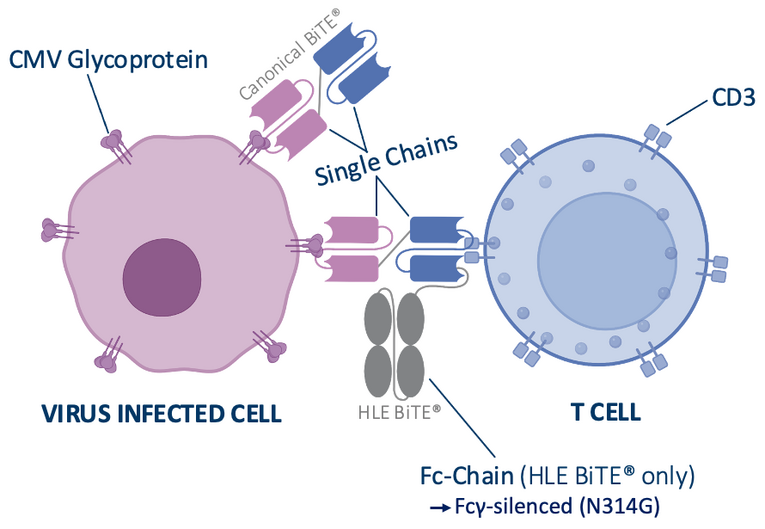Having been well established in the treatment of B-cell malignancies, the first approved bispecific T-cell engager (BiTE®) Blinatumomab has created a new pillar of immune response, since BiTEs® link T-cell effector functions to epitopes of the humoral immune response.
With our project, we are addressing the question of whether these constructs are also suitable for targeting viral infections, particularly in situations where physiological T-cell function is disrupted by a restriction in HLA presentation. For this reason, we chose murine cytomegalovirus (MCMV) as a fitting target since it represents the established small animal model of the human cytomegalovirus (HCMV).
Although HCMV usually leads to asymptomatic or mild infection, it is still the major cause of infection-related morbidity and mortality in immune suppressed patients e.g. after stem cell transplantation (SCT), and a major cause of conatal infection in all countries.
Presently, both canonical (M.D. project of Hanna Menschikowksi) and half-life extended (HLE) BiTEs® have been cloned and qualitatively tested for their binding behavior and function in vitro, and the most promising candidates are about to finally move into the mouse model.




